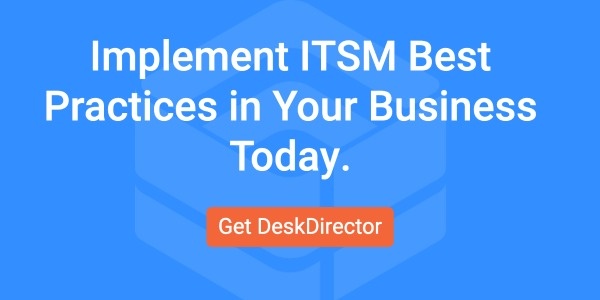ITSM is no longer just about IT. That statement might sound far-fetched, but it’s an undeniable reality in today’s landscape.
Business and IT are converging, and that trajectory has been on course for several years now. The release of ITIL-4 in 2019 reflected this change, with its unveiling of the Service Value System, which connects the impact of IT service management to overall business value. This reflects a more significant movement in the professional world that overlaps ITSM with company success.
The Expansion of Technology in the Workplace
By now, the concept of digital transformation is understood and felt worldwide. Moreover, the increase in demand for technological adoption has helped define a new era of the modern workplace heading into the 2020s.
The sharp increase of tech solutions comes with a wide variety of software, apps, and platforms that make life easier for many different industries, teams, and job types. However, these helpful advancements mean that each department had to learn about relevant tools and become masters of their own specialized tech domain. For example, customer service and sales teams leverage CRM systems, finance management solutions assist finance teams, and even brick-and-mortar businesses rely on PoS systems.
Today, non-IT professionals must have a basic technical understanding in order to contribute business value. And this tech boom also means that IT teams must deliver excellent IT service management and drive positive business outcomes.
Of course, this does not mean that the importance of IT has diluted. On the contrary, IT teams are more vital than ever, as evidenced by IT hiring increases. It’s estimated that employment in computer and information technology occupations is projected to grow 13% from 2020 to 2030, faster than the average for all occupations.
The New Service Management: Automation & AI, Remote Work, & Enterprise Service Management
With the evolving role of service management comes new areas of focus that truly help IT teams deliver positive outcomes to their organizations. Here’s the latest in modern service management.
AI & Automation: When it comes to the modern helpdesk, AI is helping support service management efforts. Consider the rise in chatbots and other AI-assisted tools. This year, it is estimated that 70% of white-collar workers will interact with conversational platforms daily.
Additionally, automation in service management is also growing to become a necessity. For example, consider how powerful IT automation enables ITSM: With the right software, IT teams can set up automated approvals, trigger specific workflows, triage high-priority tickets, and send status updates. Yet these automations are useful beyond the IT department and can fuel end-to-end service management efforts.
Remote Work & Workplace Flexibility: It’s no secret that advances in technology coupled with the pandemic rapidly pushed the new ways of working (NWoW) movement. Service management can help support the change in workplace culture that desires flexibility and work-life balance.
Technology is essential to power the flexible work movement, so ITSM can be repurposed to deliver communication and support for workers in and out of the office.
Enterprise Service Management (ESM): In the most basic terms, enterprise service management means that ITSM principles and practices can be used to improve overall business performance and outcomes. Think of it as using the IT playbook to support other areas of the organization.
While the helpdesk is the classic, well-known piece of the IT landscape, other aspects of service management can be replicated and repurposed for the enterprise. A few other ITSM practices can benefit a business in meaningful ways:
- Service Catalog: This will standardize services and procedures across the entire organization for more streamlined operations.
- Automation: Service delivery can be automated through ticketing across multiple business areas.
- Improved Employee and Customer Experience: By applying ITSM principles to the enterprise, you’ll enhance the employee experience through more organized, dedicated services and faster problem resolution. The same principles can be applied to customer support as well.
The Era of Business-Driven ITSM
This is undoubtedly an exciting time for IT service management. As IT orients itself to drive positive contributions, it is poised to prove its value to the business world for years to come.
Curious to try service management software to elevate your business? Try DeskDirector for free today.









